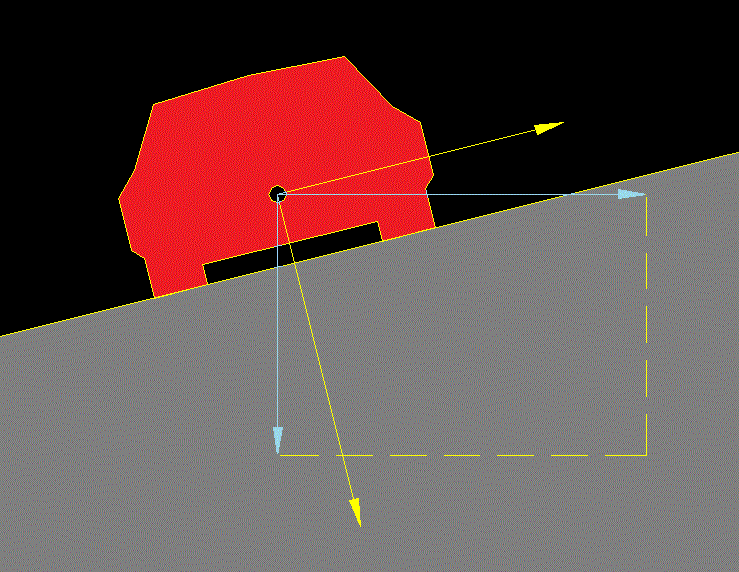|
|
Register To Post |
| CentralCoaster | The physics of racing with a golf cart strapped to your roof, (aka Racing on a banked oval.) | ||
|
Senior Guru
 |
I was HPDE "racing" a week ago, and part of the track layout goes up on the 14* banking of the nascar oval at high speed.
14 degrees doesn't sound like much but it sure feels impressive when you're on it and it does some very unfamiliar things to the car (and driver), so it got me thinking...  I'm going 120mph through there on street tires with no concept of the extra lateral grip I get from my car being squashed into the track and it is a little unnerving. I wonder if my car is bottoming out as well... so I had to dust off some old 9th grade math skills. Based on google maps, the radius of autoclub speedway turns 1&2 is about 810 ft if you ride against the white line/apron. The banking turns some of your cornering force into extra downforce. It also means gravity wants to pull your car to the inside of the turn, countering the cornering force a bit. Equation is: Lateral acceleration = speed^2 / radius * cos(banking) - [gravity * sin(banking)] And of course convert your units. At 120 mph, I was pulling 1.19 G's sideways (as if on a flat track), but the banking changes that to .91 G's that the tires have to resist from sliding up the track. The extra weight of the car pressing into the track doesn't factor in, as mass cancels out of both sides of the equation. Essentially a 1 G tire will handle 1 G of lateral acceleration regardless of the car's weight. So I've got more room to run, assuming the car doesn't bottom out. I would hit 1 G on the tires at 124.5 mph. Oh boy. This is on Nitto NT-05 tires with string and eyeball alignment. Next I checked the effect on the car's downforce. At 120mph and 14 degrees, acceleration creating downforce increases from 1 G to 1.26 G's (or 26%). Plus whatever aero downforce you may have, I'll assume none for me. So if I have a 3300 lb car, with me in it, I don't know what the sprung weight is, let's just assume it's 3000 lbs (has IRS). So my sprung mass basically weighs 26% more, or 780 lbs extra. That's a pretty hefty static load on the suspension, so it probably doesn't leave much room for suspension travel for any bumps in the pavement, if any. And this is only at .91 G's on the tires. Push that speed up until the tires hit 1 G and you're adding 28% to the weight, or 840 lbs. You could potentially be suspension limited rather than tire limited here. Time to raise the car for the racetrack! Of course there are so many other factors here, like the extra force changing your camber, CG, body roll, apexing the entire turn to increase radius a tad, etc. In other words, imagine driving your corvette at the limit of tire grip at 125 mph, with a concrete wall in the corner of your eye, and a golf cart strapped to the roof. It makes me think twice about adding a 160 lb butt in the passenger seat on this track. |
||
Posted on: 2012/11/27 21:33
Edited by CentralCoaster on 2012/11/27 21:49:36 |
|||
|
_________________
1985 Z51, ZF6 |
|||
 Transfer Transfer
|
|||
You can view topic.
You cannot start a new topic.
You cannot reply to posts.
You cannot edit your posts.
You cannot delete your posts.
You cannot add new polls.
You cannot vote in polls.
You cannot attach files to posts.
You cannot post without approval.
|
|












